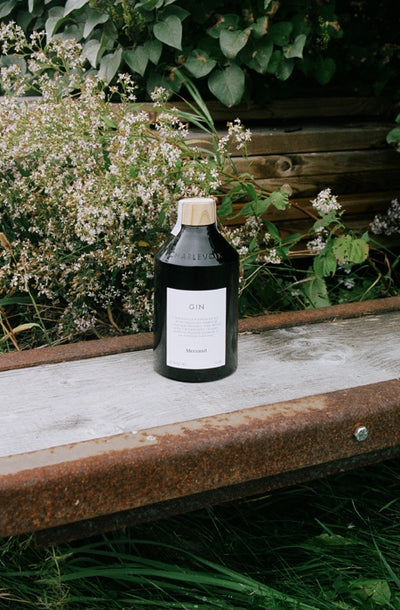Are you old enough to drink alcohol?




Félix-Antoine Savard, the priest who founded the town of Clermont in 1935, is the inspiration behind the character of Menaud, master log driver (1937). He observes the appropriation of nature by trespassers around him. All the land, fields, mountains, and rivers, all the woods, lakes, and trails are being taken over. Menaud, rooted in the realities of his region and proud of his independence, fears for this heritage, as if his very flesh and soul were being undermined.
For him, man is born a maker, then masters expand to develop alongside nature and its spectacle. These artisans respect the beauty of the country and advocate the disappropriation of nature and the preservation of the territory. By being generous with their riches, they achieve, in their own way, independence and freedom. In building Menaud, the distillery and brewery, we wanted to return to the master's roots and revive the artisanal aspects of distillation and brewing, while dissociating ourselves from its patriotic character. In doing so, Menaud would become a tribute to modern creative artisans and a fervent defender of their freedom and expertise.
For us, the focus was on using raw materials from the Charlevoix region to make authentic spirits and beers. We wanted to distill and brew beverages inspired by our land, its scents, and its flora. It became inconceivable to implement this philosophy while sourcing neutral alcohol from elsewhere. The result of our recipes had to be based on grains from our region, varying according to the harvest. In other words, we wanted to forge our identity first and foremost as a distillery. We wanted to develop and then fully control our production process, while being well aware of the scope of the project. In order to realize this vision, the first phase began with the development of the foundation for all our beverages: a grain alcohol with an alcohol content of 96% by volume. However, like wine and the grapes used to make it, the taste and flavor of artisanal alcohol depend on the type of grain, its origin, and the processing methods used. Many ingredients containing fermentable sugars could have been selected to produce our base: grains, fruits, potatoes, corn, etc. Taking an empirical approach, where even fava beans were put to the test, we chose to use wheat for its brioche-like flavor and silky texture, and rye for its spicy notes, in proportions of 75/25 respectively.
The origin of these grains seemed obvious. They must have come entirely from Isle-aux-Coudres, more specifically from Harvey Farm. While these modern artisans were already working full-time, they had the romantic idea of taking advantage of their property on the island to harvest all kinds of grains. The humidity of the river, the salty air surrounding their land, and the late arrival of the seasons, expressed in a raw, tight, iodine-rich grain, would outweigh the risks of a single-supplier supply chain. At the end of the first phase, the result was a distinctive base spirit: a blank canvas with a delicate bouquet.